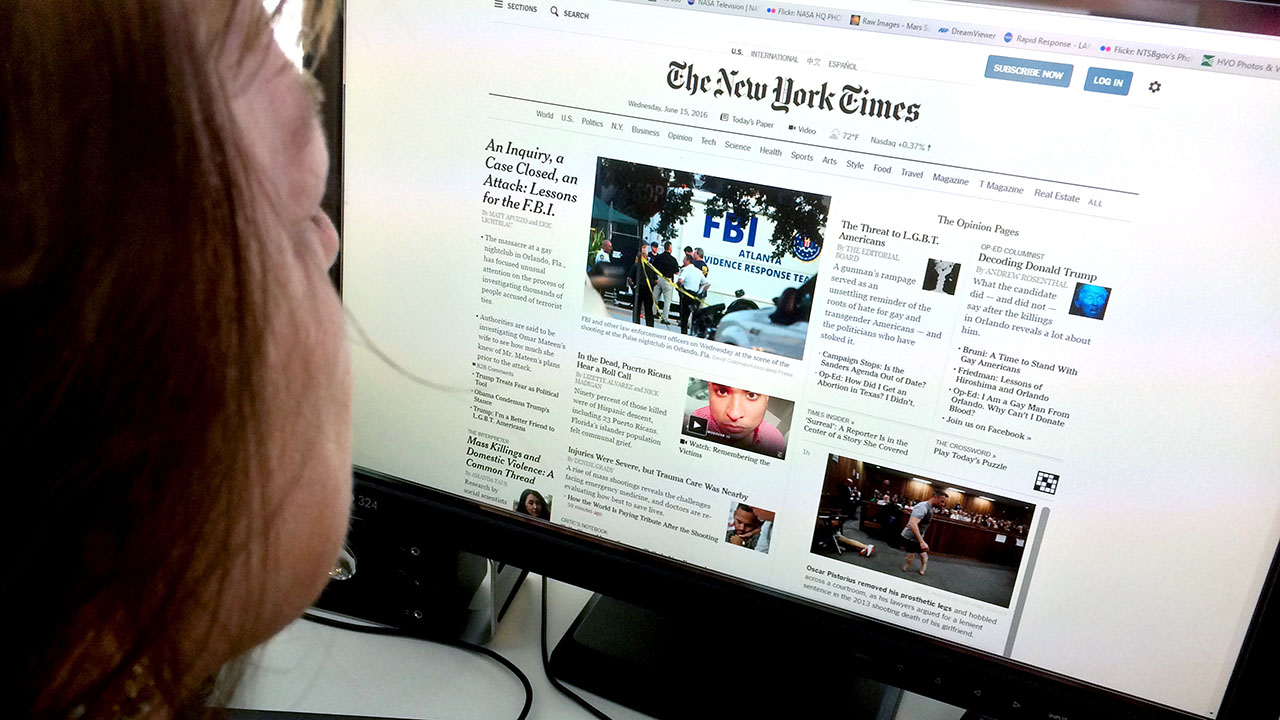DW News Top Stories and Exclusive Interviews Worldwide
DW News Top Stories and Exclusive Interviews Worldwide
Blog Article
The Evolution of Journalism in the Age of Information Online
In the quickly changing landscape of journalism, the electronic age has ushered in a brand-new age where the immediacy of on the internet news improves both its creation and intake. As digital platforms multiply, they boost interactivity and expand the reach of journalism, yet all at once challenge traditional standards with the speedy spread of details and false information alike. The rise of person reporters and independent voices further makes complex the narrative, adding to a dynamic yet precarious media ecosystem. As we browse these intricacies, one need to wonder about the future of journalistic stability and how it can be secured amidst these transformative modifications.

Rise of Digital News Operatings Systems
The increase of electronic news systems has fundamentally changed the landscape of journalism, noting a shift from typical print media to vibrant, online areas. This evolution was driven by developments in modern technology and the raising ease of access of the internet, which enabled information to be disseminated quickly and broadly. Unlike their print equivalents, digital systems can immediately update content, providing real-time information coverage and evaluation that interest the contemporary visitor's need for immediacy and importance.
Digital systems have additionally widened the scope of journalism, allowing a diversity of voices and perspectives. With reduced obstacles to access, independent reporters and smaller sized wire service can reach worldwide target markets, testing the syndicate as soon as held by developed media empires. This democratization of news has enriched the public discourse, using differed stories and satisfying particular niche interests that were previously underserved.
Furthermore, the combination of multimedia aspects such as video, sound, and interactive graphics boosts narration, making information extra interesting and available (dw news). This multimedia come close to not just draws in a wider audience however likewise aids in the comprehension of complicated stories. Essentially, digital platforms have redefined journalism, fostering development and adaptability in an ever-evolving media environment

Effect of Social Media Site
Social media site platforms have even more transformed journalism by changing exactly how information is eaten and shared. These systems have actually equalized information circulation, making it possible for anyone with internet access to report events in real-time. This immediacy has placed conventional news outlets in a race to maintain, compelling them to adopt faster reporting methods. Additionally, social networks has actually broadened audiences, approving journalists access to worldwide viewership beyond geographical constraints.

The interactive nature of social networks cultivates involvement, permitting target markets to join discussions, share viewpoints, and add to information stories. This communication improves the dynamic in between reporters and their target markets, promoting a more participatory type of journalism. Nevertheless, this also positions tremendous pressure on reporters to generate web content that reverberates with target markets, typically prioritizing sensationalism to record interest.
Moreover, social media systems have ended up being vital devices for reporters to source tales, determine popular opinion, and connect with industry peers. By keeping an eye on trending topics and user-generated content, reporters can uncover stories that might or else be ignored. Yet, the reliance on social networks also requires a critical examination of sources to guarantee the credibility of info shared. In this advancing landscape, adaptability stays critical for journalists to prosper.
Obstacles of Misinformation
Amidst the digital transformation of journalism, one considerable obstacle is the prevalent spread of false information. In a period where information is abundant and quickly easily accessible, identifying in between this contact form reputable news and produced material has actually ended up being significantly hard. The large quantity of info distributed throughout different on-line systems usually obscures the line between fact and fiction, posing a significant threat to the integrity of journalism.
False information can spread out swiftly with social networks, where formulas prioritize involvement over precision, unintentionally magnifying incorrect narratives (dw news). This not only threatens public rely on media organizations however also fosters a setting where misleading material can influence public opinion and decision-making processes. The challenge for reporters is twofold: to disprove fallacies efficiently and to copyright additional reading rigorous standards of fact-checking and confirmation
Additional complicating this problem is the presence of deepfakes and sophisticated disinformation projects that take advantage of advanced modern technologies to produce misleading web content equivalent from legit reporting. As these modern technologies progress, so must the devices and methods employed by reporters to fight them. Addressing misinformation requires partnership between media companies, technology firms, and policymakers to develop thorough techniques that safeguard the credibility of details in the digital age.
Duty of Citizen Reporters
Browsing the landscape of misinformation highlights the transformative influence of citizen reporters within the digital world. As standard media electrical outlets come to grips with the large speed and quantity of news dissemination online, resident reporters-- common people armed with mobile phones and accessibility to social media sites-- are playing a progressively crucial role. These grassroots contributors have come to be instrumental in covering events quickly, commonly providing real-time updates from the ground before mainstream media can react.
Person journalists have equalized information coverage, amplifying voices that might otherwise stay unheard. By leveraging systems like Twitter, Facebook, and Instagram, they offer diverse perspectives that challenge the narratives often pressed by developed media. This democratization, nonetheless, additionally presents difficulties. The lack of formal training or content oversight can result in the spread of unverified details, making go now complex efforts to differentiate reality from fiction.
Nevertheless, citizen journalism is reshaping the media landscape, engaging standard electrical outlets to adapt by integrating user-generated web content right into their coverage. By promoting community engagement and motivating participatory journalism, these digital storytellers add to an extra inclusive and vibrant information environment. As resident journalists proceed to progress, their duty in shaping public discourse continues to be a crucial element of contemporary journalism.

Future of Journalistic Stability
The proliferation of digital systems has actually democratized information circulation, allowing a larger range of voices to add to the news landscape. This has actually additionally led to the spread of misinformation and the disintegration of depend on in media.
The rise of expert system and algorithm-driven material curation even more makes complex the landscape. While AI can improve reporting by examining vast datasets and recognizing patterns, it additionally positions risks of predisposition and manipulation. Reporters should consequently remain watchful, ensuring that modern technology functions as a tool for reality rather than distortion.
Furthermore, the financial stress on standard media outlets necessitate cutting-edge service designs to sustain quality journalism. Subscription-based models, not-for-profit financing, and partnerships with tech firms are becoming prospective services. Yet, they must be sought without jeopardizing editorial freedom.
Inevitably, the future of journalistic stability relies on the commitment of journalists and media organizations to maintain transparency, liability, and an unwavering commitment to fact, in the middle of a rapidly transforming electronic world.
Conclusion
The advancement of journalism in the digital age provides both possibilities and obstacles. The increase of electronic information systems and social media has actually equalized information dissemination, empowering a varied selection of voices, including citizen journalists.
The surge of electronic information systems has fundamentally transformed the landscape of journalism, noting a change from traditional print media to vibrant, online spaces. With lower obstacles to access, independent reporters and smaller sized information companies can get to worldwide audiences, challenging the monopoly once held by established media conglomerates.Social media platforms have further revolutionized journalism by altering how information is eaten and shared. As standard media electrical outlets grapple with the sheer speed and quantity of information circulation online, resident journalists-- common individuals armed with smartphones and accessibility to social media-- are playing a significantly essential function. The rise of digital news systems and social media has actually democratized information circulation, encouraging a varied variety of voices, including citizen reporters.
Report this page